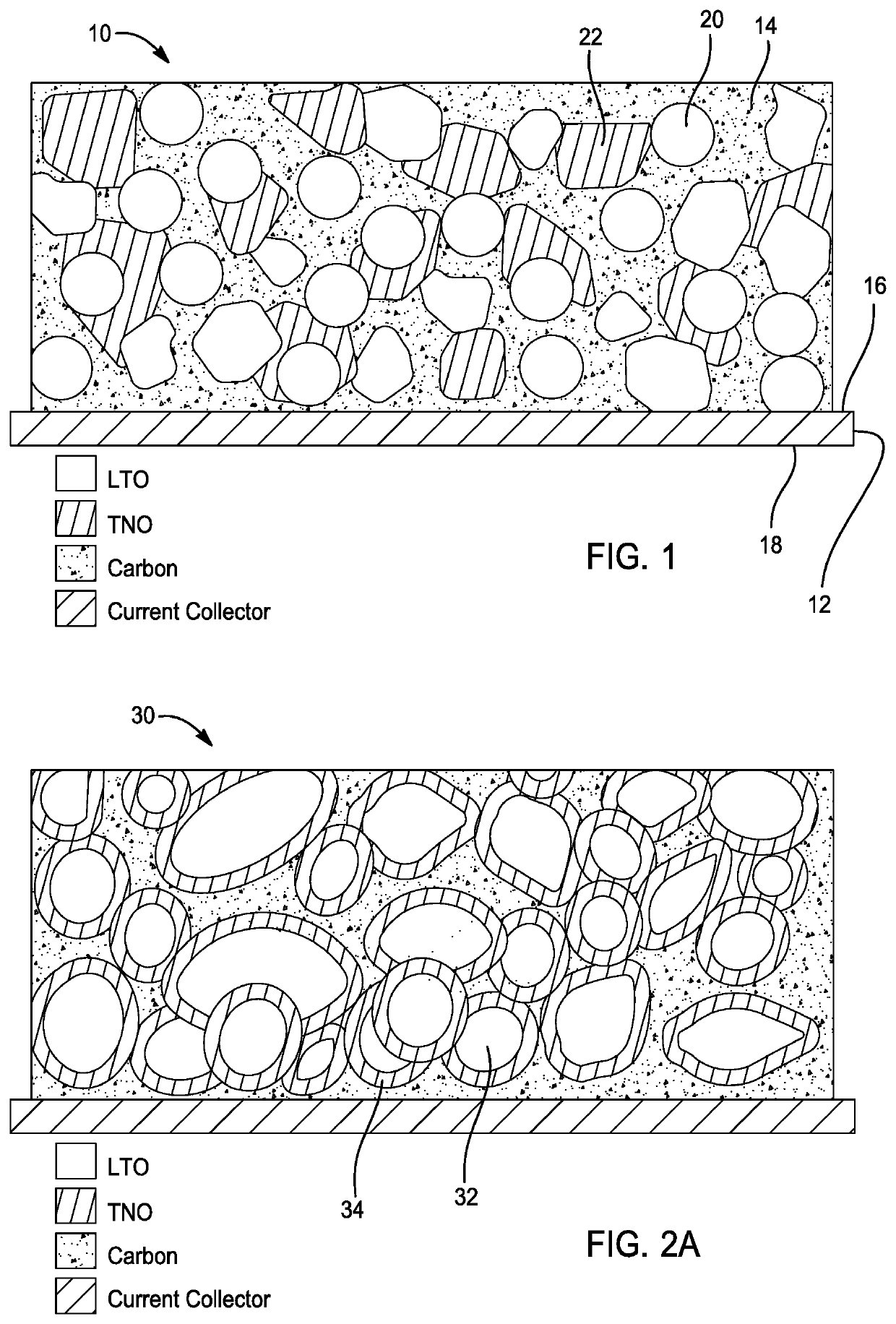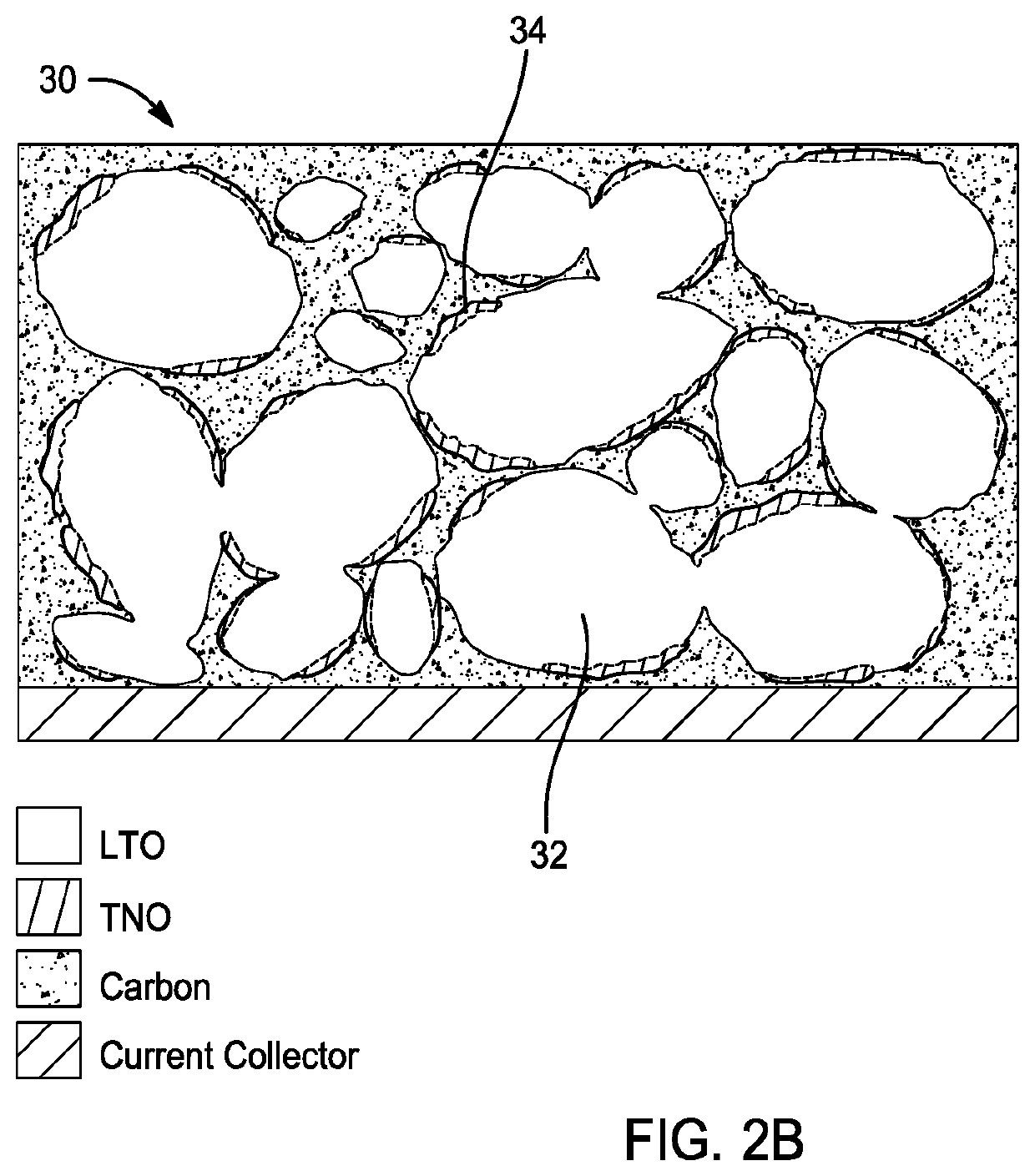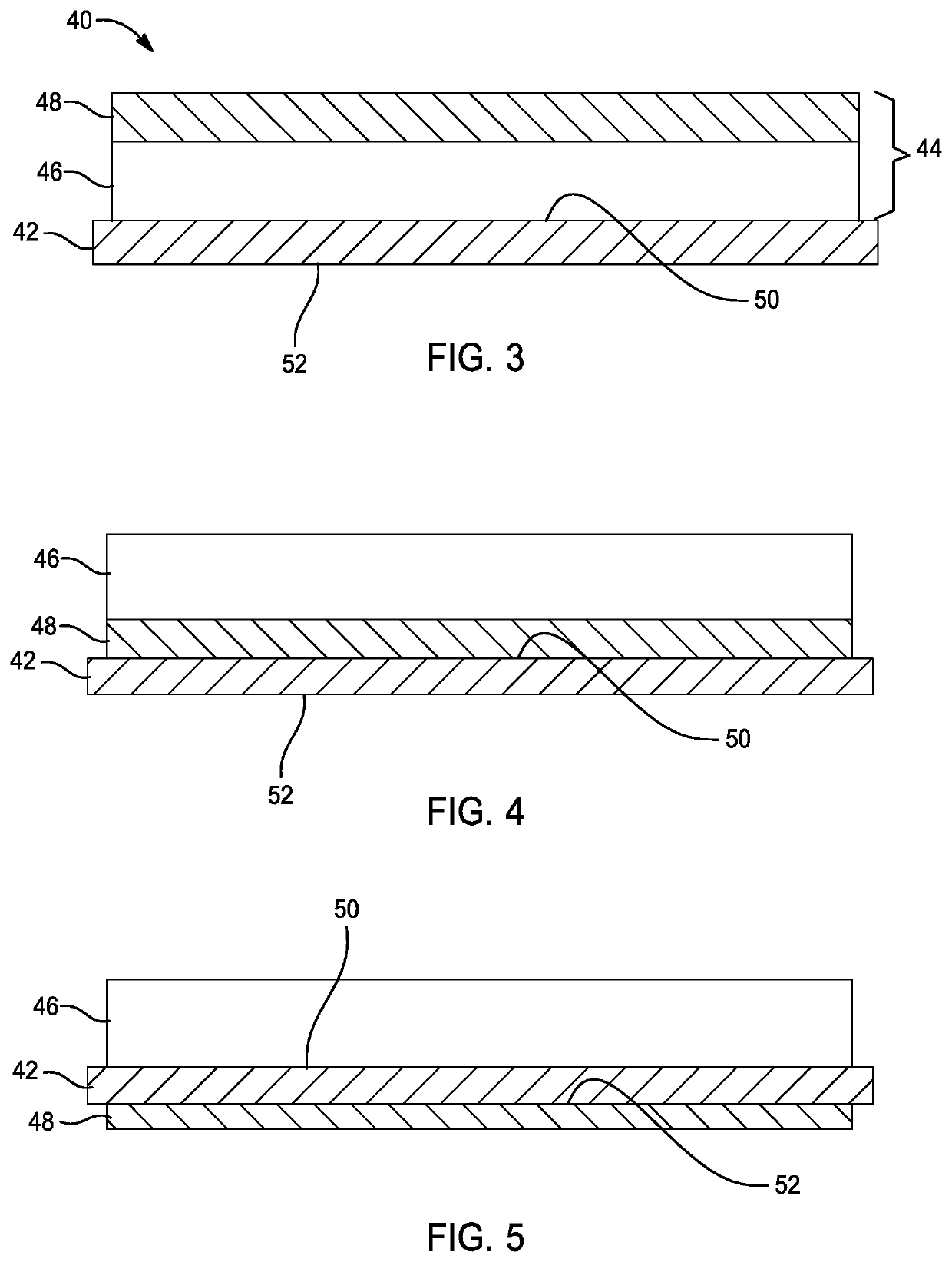Electrode with enhanced state of charge estimation
- Summary
- Abstract
- Description
- Claims
- Application Information
AI Technical Summary
Benefits of technology
Problems solved by technology
Method used
Image
Examples
Embodiment Construction
[0030]The following description is merely exemplary in nature and is not intended to limit the present disclosure, application, or uses.
[0031]Referring to FIG. 1, an anode electrode 10 for a battery with enhanced state of charge estimation is provided in accordance with one embodiment of the present disclosure. As shown, the anode electrode 10 comprises a negative current collector 12 and an anode layer 14. In this embodiment, the negative current collector 12 has a first side 16 and a second side 18. Moreover, the negative current collector is comprised of a conductive material such as metal, metal alloy, or any other suitable material.
[0032]Preferably, the anode layer 14 is disposed on at least one of the first and second sides 16, 18 of the negative current collector 12. As shown, the anode layer 14 is disposed on the first side 16 of the negative current collector 12. In this embodiment, the anode layer 14 comprises lithium-titanium oxide 20 and a second anode material (e.g. nio...
PUM
 Login to View More
Login to View More Abstract
Description
Claims
Application Information
 Login to View More
Login to View More - R&D
- Intellectual Property
- Life Sciences
- Materials
- Tech Scout
- Unparalleled Data Quality
- Higher Quality Content
- 60% Fewer Hallucinations
Browse by: Latest US Patents, China's latest patents, Technical Efficacy Thesaurus, Application Domain, Technology Topic, Popular Technical Reports.
© 2025 PatSnap. All rights reserved.Legal|Privacy policy|Modern Slavery Act Transparency Statement|Sitemap|About US| Contact US: help@patsnap.com



